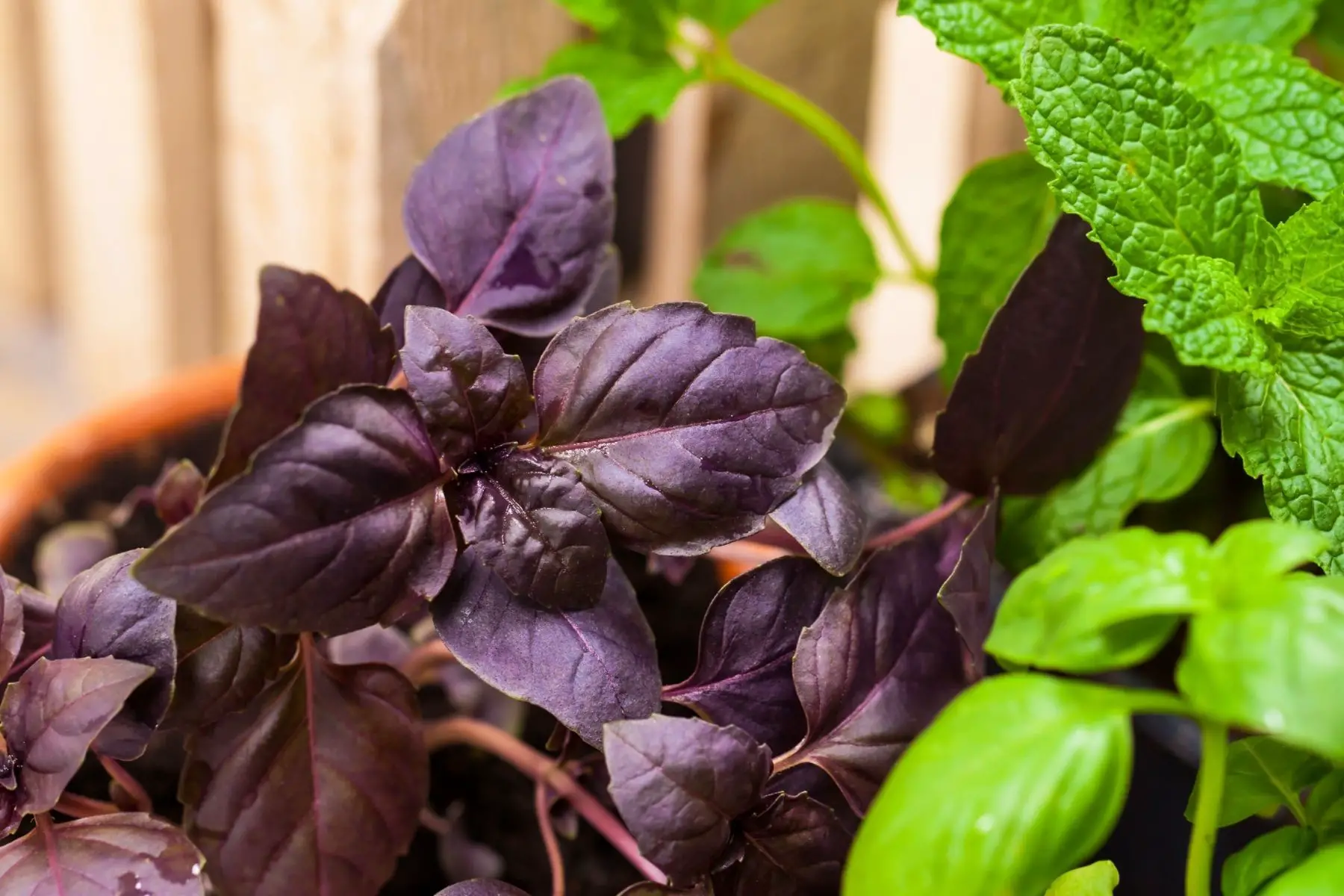Last Updated on April 9, 2024 by Real Men Sow
The garden can benefit from plants with dark leaves. They are more visually appealing and offer a stark contrast to other colors. There are some important points to keep in mind when combining dark-leaved plant varieties.
Don’t Grow These Black Leaves Plants Together
First, don’t grow these plants together. They will stand out more when grown as statement plants or combined with green-leaved flowers, where the colors can bounce off each other.
Why Do Plants Have Black Leaves
Many dark-leaved plants produce deep purple or dark bronze-red foliage. These undertones can be brought out by combining them with plants that have purple flowers or plants with red flowers, creating beautiful combinations.
10 Plants With Black Leaves
Purple Basil
Purple basil is a great place to start if you are looking for dark-leaved plants you can eat. You can grow ‘Crimson King and ‘Dark Opal varieties. Some lettuce varieties, as well as Chinese basil and red orache, are also edibles that have dark leaves.
Loropetalum
An evergreen shrub with beautiful, deep pink flowers. It’s similar to witch hazel. Dark foliage can be obtained from cultivars like “Fire Dance” or “Hot Spice”, as shown in the image. Frost-resistant plants may need winter protection.
Dahlias
Although not all dahlias are able to produce dark leaves, there are some that do. Combine them with green-leaved plants in order to make the darker leaves stand out. If you want to read more on how to grow dahlias, make sure you check our previous post.
Prunus cerasifera
Many dark-leaved varieties, such as ‘Nigra and ‘Pissardii. The contrast between the pale-pink spring flowers and the dark leaves is stunning.
Cercis
Produces a profusion of tiny, pea-like flowers that bloom in spring in vibrant shades of purple and pink. They look great when grown in the borders. Dark foliage can be obtained from cultivars such as ‘Ruby Fall ‘ and ‘Forest Pansy”.
Physocarpus
A deciduous shrub that can be grown in borders, you can also surround them by a tapestry with complementary plants. It also produces summer flowers that are pollinator friendly. For particularly dark foliage, try ‘Diabolo’ and ‘Diable d’Or’.
Actaea
A shade-loving species that produces tall spires full of bottlebrush flowers. Dark foliage is available in cultivars such as ‘Brunette, Pink Spike, and ‘Queen of Sheba. They thrive in moist, well-drained soil.
Castor oil plant (Ricinus communis)
An architectural beauty that’s often grown alongside other plants such as cannas and tetrapanax. Choose a cultivar such as ‘Carmencita” or ‘New Zealand Purple to get the most dark foliage.
Smokebush (Cotinus)
They’re mostly around in the summer and are covered with a cloud of feathery flowers, giving them their their name. To get large, vibrant leaves in spring, cut them back. The darkest leaves are ‘Royal Purple” and ‘Purpureus”.
Dark-leaved elder (Sambucus nigra)
Dark-leaved elder (Sambucus Nigris) can be cut back to the ground in spring to create a stunning display of leaves and best-colored foliage.


